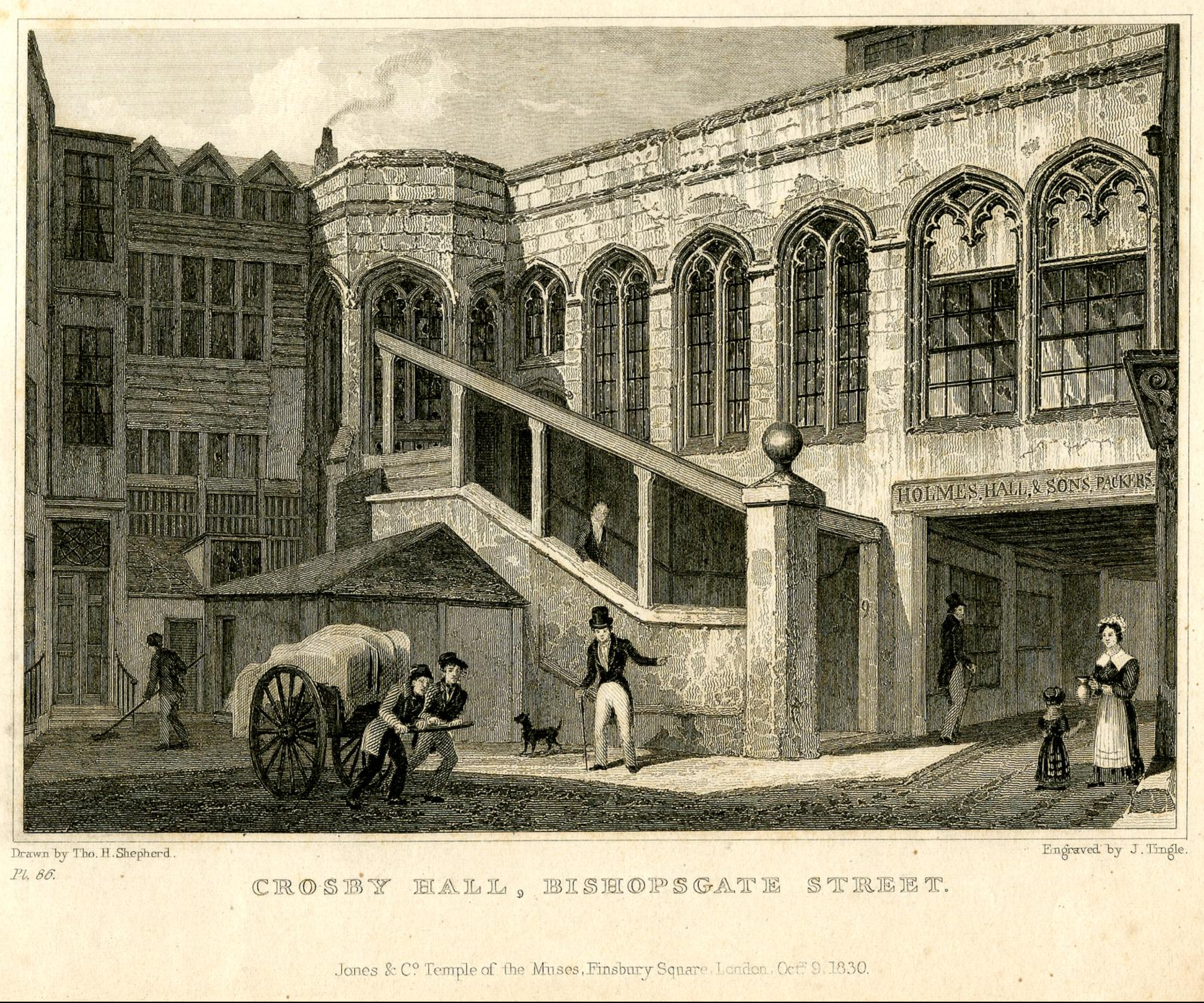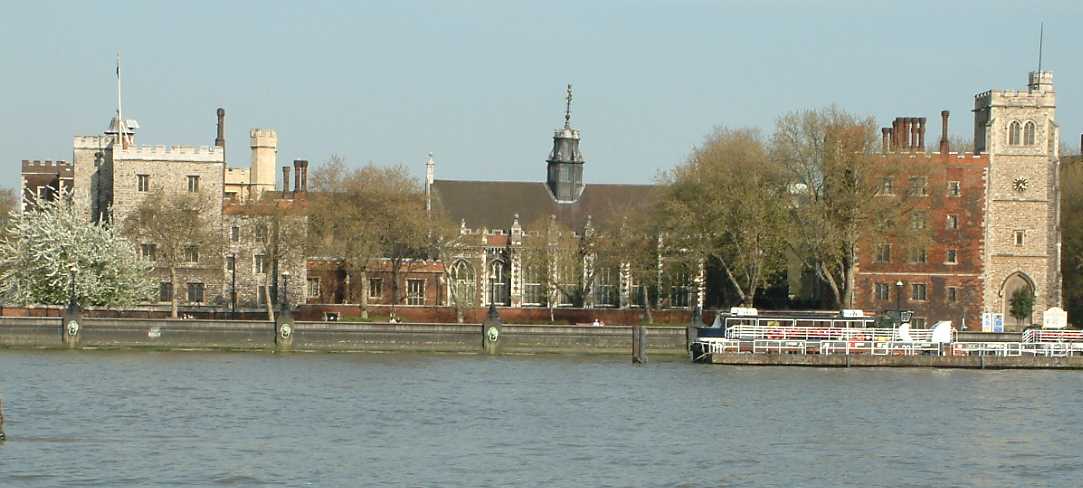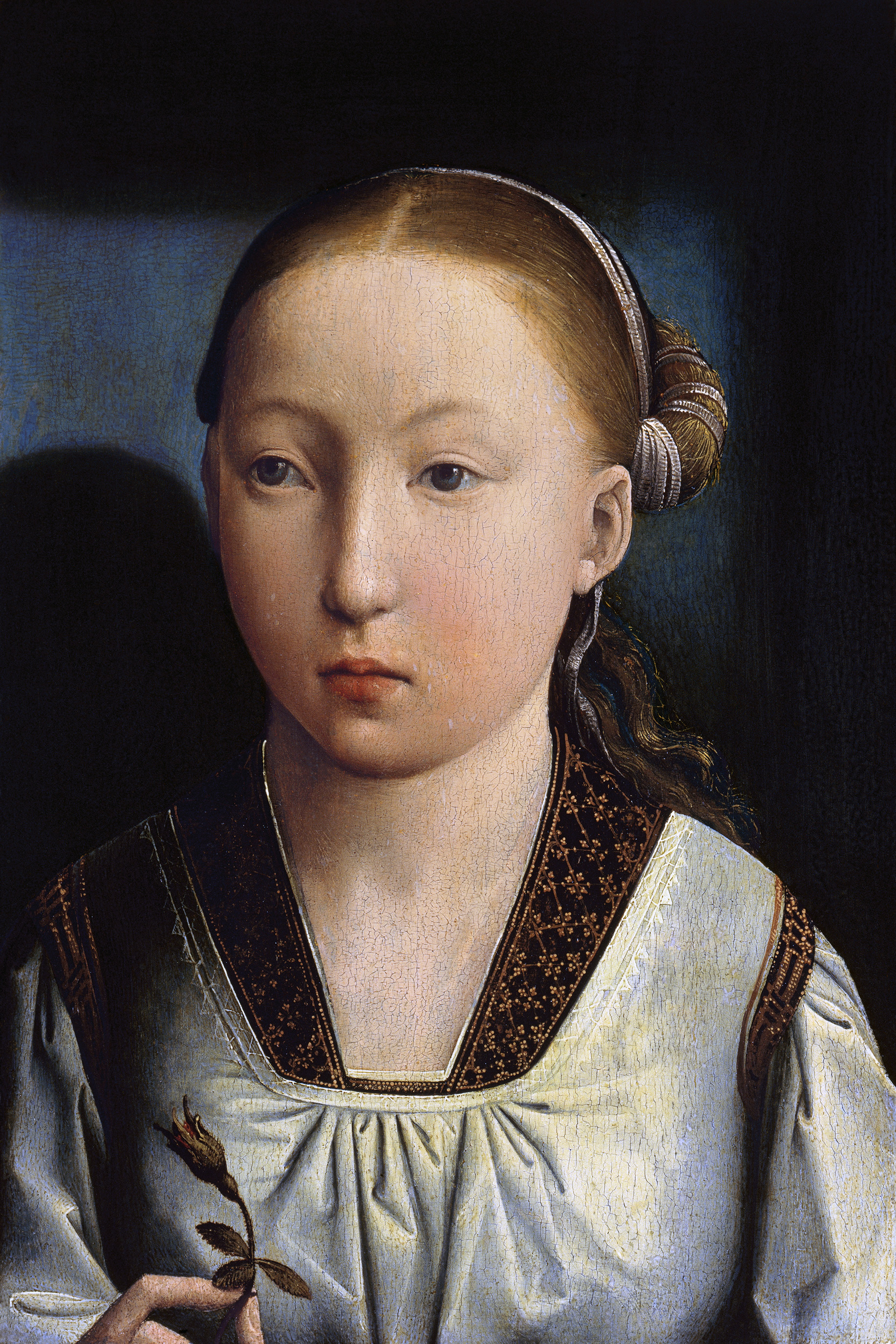|
Crosby Place
Crosby Hall is a historic building in London. The Great Hall was built in 1466 and originally known as Crosby Place on Bishopsgate, in the City of London. It was moved in 1910 to its present site in Cheyne Walk, Chelsea. It now forms part of a private residence, which in 2021 was renamed Crosby Moran Hall. The Great Hall, and additional work of 1910 and 1925–1926, are listed Grade II*. Although fragmentary and not on its original site, this is the only example of a medieval City merchant house surviving in London. Between 1988 and 2021 it was restored, and further buildings added, to create the present complex. The Great Hall is considered to be the most important surviving secular domestic medieval building in London. History Bishopsgate The Great Hall is the only surviving part of the medieval mansion of Crosby Place, Bishopsgate, in the City of London. It was built between 1466 and 1475 on the grounds of St Helen's Convent next to St Helen's Church, Bishopsgate (Coordin ... [...More Info...] [...Related Items...] OR: [Wikipedia] [Google] [Baidu] |
Thames
The River Thames ( ), known alternatively in parts as the River Isis, is a river that flows through southern England including London. At , it is the longest river entirely in England and the second-longest in the United Kingdom, after the River Severn. The river rises at Thames Head in Gloucestershire and flows into the North Sea near Tilbury, Essex and Gravesend, Kent, via the Thames Estuary. From the west, it flows through Oxford (where it is sometimes called the Isis), Reading, Henley-on-Thames and Windsor. The Thames also drains the whole of Greater London. The lower reaches of the river are called the Tideway, derived from its long tidal reach up to Teddington Lock. Its tidal section includes most of its London stretch and has a rise and fall of . From Oxford to the estuary, the Thames drops by . Running through some of the drier parts of mainland Britain and heavily abstracted for drinking water, the Thames' discharge is low considering its length and bre ... [...More Info...] [...Related Items...] OR: [Wikipedia] [Google] [Baidu] |
Richard III Of England
Richard III (2 October 1452 – 22 August 1485) was King of England from 26 June 1483 until his death in 1485. He was the last king of the Plantagenet dynasty and its cadet branch the House of York. His defeat and death at the Battle of Bosworth Field marked the end of the Middle Ages in England. Richard was created Duke of Gloucester in 1461 after the accession to the throne of his older brother Edward IV. This was during the period known as the Wars of the Roses, an era when two branches of the royal family contested the throne; Edward and Richard were Yorkists, and their side of the family faced off against their Lancastrian cousins. In 1472, Richard married Anne Neville, daughter of Richard Neville, 16th Earl of Warwick, and widow of Edward of Westminster, son of Henry VI. He governed northern England during Edward's reign, and played a role in the invasion of Scotland in 1482. When Edward IV died in April 1483, Richard was named Lord Protector of the realm for Ed ... [...More Info...] [...Related Items...] OR: [Wikipedia] [Google] [Baidu] |
Lambeth Palace
Lambeth Palace is the official London residence of the Archbishop of Canterbury. It is situated in north Lambeth, London, on the south bank of the River Thames, south-east of the Palace of Westminster, which houses Parliament of the United Kingdom, Parliament, on the opposite bank. Close to Westminster and the City of London, City, the estate was first acquired by the archdiocese for the archbishop (who also has a residence at Old Palace, Canterbury) around 1200. History While the original residence of the archbishop of Canterbury was in his episcopal see, Canterbury, Canterbury, Kent, a site originally called the Manor of Lambeth or Lambeth House was acquired by the diocese around Anno Domini, AD 1200 (though Archbishop Anselm of Canterbury, Anselm had a house there a century earlier) and has since served as the archbishop's London residence. The site was chosen for its convenient proximity to the royal palace and government seat of Westminster, just across the Thames. The si ... [...More Info...] [...Related Items...] OR: [Wikipedia] [Google] [Baidu] |
Evil May Day
Evil May Day or Ill May Day is the name of a Xenophobia, xenophobic riot which took place on 1 May 1517 as a protest against foreigners (called "strangers") living in London. Apprenticeship, Apprentices attacked foreign residents ranging from "Flemish cobblers" to "French royal courtiers". Some of the rioters were later hanged, although Henry VIII, King Henry VIII granted a pardon for the remainder following public pleadings from Wives of Henry VIII, his wife Catherine of Aragon. Causes Demographics of Tudor London In the early part of the reign of King Henry VIII, Londoners came to resent the presence of foreigners (called "strangers") arriving from Continental Europe, the continent, especially immigrant Flemish people, Flemish workers and the wealthy foreign merchants and bankers of Lombard Street, London, Lombard Street. At the time, only about 2% of London's population of approximately 50,000 were foreign-born. Role of "Dr Bell" According to the chronicler Edward Hall (c. ... [...More Info...] [...Related Items...] OR: [Wikipedia] [Google] [Baidu] |
Maximilian I, Holy Roman Emperor
Maximilian I (22 March 1459 – 12 January 1519) was King of the Romans from 1486 and Holy Roman Emperor from 1508 until his death in 1519. He was never crowned by the Pope, as the journey to Rome was blocked by the Venetians. He proclaimed himself elected emperor in 1508 at Trent, with Pope Julius II later recognizing it. This broke the tradition of requiring a papal coronation for the adoption of the Imperial title. Maximilian was the only surviving son of Frederick III, Holy Roman Emperor, and Eleanor of Portugal. From his coronation as King of the Romans in 1486, he ran a double government, or ''Doppelregierung'' with his father until Frederick's death in 1493. Maximilian expanded the influence of the House of Habsburg through war and his marriage in 1477 to Mary, Duchess of Burgundy. However, he also lost his family's lands in Switzerland to the Swiss Confederacy. Through the marriage of his son Philip the Handsome to eventual queen Joanna of Castile in 1496, Maxim ... [...More Info...] [...Related Items...] OR: [Wikipedia] [Google] [Baidu] |
Bartholomew Reade
Sir Bartholomew Reade (or Rede; died 1505) was an English goldsmith and politician who served as Lord Mayor of London. Family Reade was born in Cromer, Norfolk. His parents were Roger Reade (d. 1470) and his wife Catherine, and he had at least two siblings, John and Simon. He was already well-established in London by 1486, when he is mentioned in his mother's will as a "citizen and goldsmith of London". Rye, Walterbr>"Cromer, Past and Present"pg. 51 Offices Reade, a goldsmith, was for several years the Master of the Mint. Along with Lord Daubeney, he was commissioned to mint the first gold sovereigns in 1489. He was one of the Sheriffs of London in 1497. Two years later, he was alderman of the ward of Aldersgate Aldersgate is a Wards of the City of London, Ward of the City of London, England, named after one of the northern City gate, gates in the London Wall which once enclosed the City. The Ward of Aldersgate is traditionally divided into Aldersga .... He was elec ... [...More Info...] [...Related Items...] OR: [Wikipedia] [Google] [Baidu] |
Henry VII Of England
Henry VII (28 January 1457 – 21 April 1509), also known as Henry Tudor, was King of England and Lord of Ireland from his seizure of the crown on 22 August 1485 until his death in 1509. He was the first monarch of the House of Tudor. Henry was the son of Edmund Tudor, 1st Earl of Richmond, and Lady Margaret Beaufort. His mother was a great-granddaughter of John of Gaunt, an English prince who founded the Lancastrian cadet branch of the House of Plantagenet. His father was the half-brother of the Lancastrian king Henry VI. Edmund Tudor died three months before his son was born, and Henry was raised by his uncle Jasper Tudor, a Lancastrian, and William Herbert, a supporter of the Yorkist branch of the House of Plantagenet. During Henry's early years, his uncles and the Lancastrians fought a series of civil wars against the Yorkist claimant, Edward IV. After Edward retook the throne in 1471, Henry spent 14 years in exile in Brittany. He attained the throne when his f ... [...More Info...] [...Related Items...] OR: [Wikipedia] [Google] [Baidu] |
Arthur, Prince Of Wales
Arthur, Prince of Wales (19/20 September 1486 – 2 April 1502), was the eldest son of King Henry VII of England and Elizabeth of York, and an older brother to the future King Henry VIII. He was Duke of Cornwall from birth, and he was created Prince of Wales and Earl of Chester in 1489. As the heir apparent of his father, Arthur was viewed by contemporaries as the great hope of the newly established House of Tudor. His mother was the daughter of the Yorkist king, Edward IV, and his birth cemented the union between the House of Lancaster and the House of York. Plans for Arthur's marriage began before his third birthday. At the age of eleven, he was formally betrothed to Catherine of Aragon, a daughter of the powerful Catholic Monarchs in Spain, in an effort to forge an Anglo-Spanish alliance against France and Scotland. Arthur was well educated and was in good health for the majority of his life. Soon after his marriage to Catherine in 1501, the couple took up residence at L ... [...More Info...] [...Related Items...] OR: [Wikipedia] [Google] [Baidu] |
Catherine Of Aragon
Catherine of Aragon (also spelt as Katherine, historical Spanish: , now: ; 16 December 1485 – 7 January 1536) was List of English royal consorts, Queen of England as the Wives of Henry VIII, first wife of King Henry VIII from their marriage on 11 June 1509 until its annulment on 23 May 1533. She was Princess of Wales while married to Henry's elder brother, Arthur, Prince of Wales, for a short period before his death. Catherine was born at the Archbishop's Palace of Alcalá de Henares, and was the youngest child of Isabella I of Castile and Ferdinand II of Aragon. She was three years old when she was betrothed to Arthur, the eldest son of Henry VII of England. They married in 1501, but Arthur died five months later. Catherine spent years in limbo, and during this time, she held the position of ambassador of the Aragonese crown to Kingdom of England, England in 1507, the first known female ambassador in European history. She married Henry VIII shortly after his accession i ... [...More Info...] [...Related Items...] OR: [Wikipedia] [Google] [Baidu] |
Richard III (play)
''The Tragedy of Richard the Third'', often shortened to ''Richard III'', is a play by William Shakespeare, which depicts the Niccolò_Machiavelli, Machiavellian rise to power and subsequent short reign of King Richard III of England. It was probably written . It is labelled a Shakespearean history, history in the First Folio, and is usually considered one, but it is sometimes called a Shakespearean tragedy, tragedy, as in the quarto edition. ''Richard III'' concludes Shakespeare's first tetralogy which also contains ''Henry VI, Part 1'', ''Henry VI, Part 2'', and ''Henry VI, Part 3''. It is the second longest play in the Shakespeare's plays, Shakespearean canon and is the longest of the First Folio, whose version of ''Hamlet'', otherwise the longest, is shorter than its quarto counterpart. The play is often abridged for brevity, and peripheral characters removed. In such cases, extra lines are often invented or added from elsewhere to establish the nature of the characters' rel ... [...More Info...] [...Related Items...] OR: [Wikipedia] [Google] [Baidu] |
William Shakespeare
William Shakespeare ( 23 April 1564 – 23 April 1616) was an English playwright, poet and actor. He is widely regarded as the greatest writer in the English language and the world's pre-eminent dramatist. He is often called England's national poet and the "Bard of River Avon, Warwickshire, Avon" or simply "the Bard". His extant works, including William Shakespeare's collaborations, collaborations, consist of some Shakespeare's plays, 39 plays, Shakespeare's sonnets, 154 sonnets, three long narrative poems and a few other verses, some of uncertain authorship. His plays List of translations of works by William Shakespeare, have been translated into every major modern language, living language and are performed more often than those of any other playwright. Shakespeare remains arguably the most influential writer in the English language, and his works continue to be studied and reinterpreted. Shakespeare was born and raised in Stratford-upon-Avon, Warwickshire. At the age of 18 ... [...More Info...] [...Related Items...] OR: [Wikipedia] [Google] [Baidu] |









